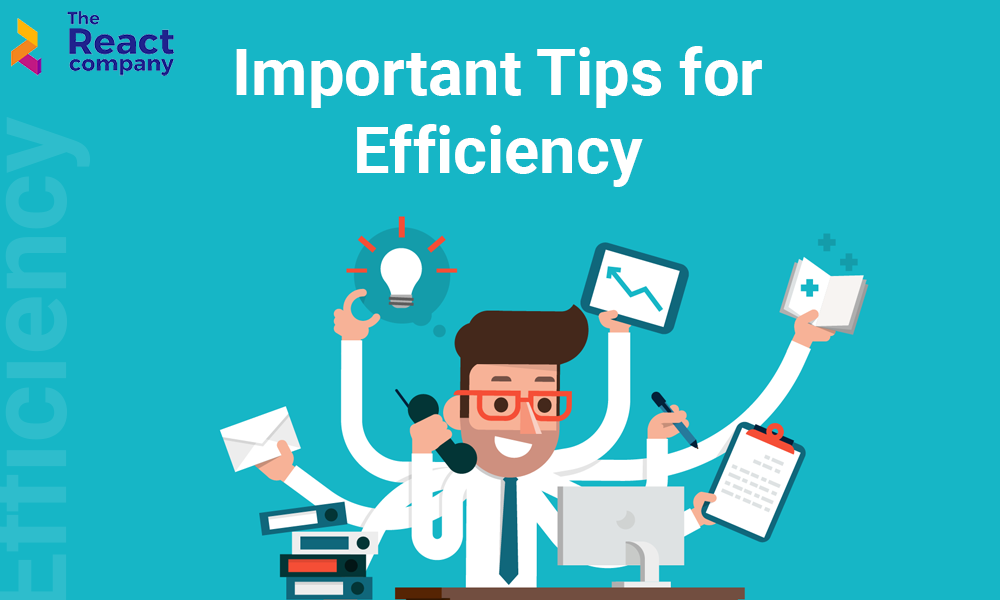As a leading company in the React community, React Company understands the importance of building efficient components. React is a powerful library for building user interfaces, and it’s crucial to optimize your components to ensure your application runs smoothly. In this blog, we’ll share some important tips for building efficient React component. For more details on this, keep visiting us at The React Company.
In other words, By following these tips, you can further improve the performance of your React component and create faster, more efficient applications.
Use Pure Components
React Company recommends using pure components to improve the performance of your application. Pure components are components that don’t depend on any external state or props. Instead, they rely on their internal state to render. Pure components are also referred to as “dumb” components, as they only have a render method and no logic outside of that. By using pure components, React only needs to update the component when its state changes, leading to a faster and more efficient rendering process.
Avoid Unnecessary Renderings
Unnecessary renderings are one of the main causes of performance issues in React applications. When a component re-renders, React has to update the DOM, which can be a time-consuming process. One way to avoid unnecessary renderings is by using the should Component Update lifecycle method. This method allows you to control when a component should re-render, based on changes to its props or state. By optimizing when your components re-render, you can improve the performance of your application.
Use Memoization
Memoization is a technique used to optimize functions by caching the results of expensive calculations. In React, you can use the useMemo hook to memoize the results of a function, and only re-calculate it when the input values change. By memoizing expensive calculations, you can improve the performance of your components and reduce unnecessary re-renders.
Use React Profiler
React Company recommends using the React Profiler to identify performance bottlenecks in your application. The React Profiler is a tool that allows you to visualize the performance of your components, and identify which components are causing performance issues. By using the React Profiler, you can optimize your components and improve the performance of your application.
Optimize Images

Images are often a major source of performance issues in React applications. Large images can take a long time to load, leading to slow rendering times and poor performance. To optimize images in your application, React Company recommends compressing them to reduce their file size, and using lazy loading to defer their loading until they’re needed.
Use React.lazy() for Code Splitting
Code splitting is a technique used to improve the loading time of your application by splitting your code into smaller chunks that can be loaded as needed. In React, you can use the React.lazy() function to load components lazily, meaning they’re only loaded when they’re needed. By using React.lazy(), you can reduce the amount of code that needs to be loaded upfront, leading to faster loading times and improved performance.
Keep Your Components Small
Large components can be difficult to manage and lead to performance issues. React Company recommends keeping your components small and focused on a single responsibility. By breaking down your components into smaller, more manageable pieces, you can improve the reusability of your code and reduce the risk of performance issues. If you want to learn about the React libraries, then read: Top 3 React UI Libraries in 2023: Enhance Your Projects.
Use the Right Tools
Choosing the right tools and libraries can have a significant impact on the performance of your application. React Company recommends using tools like Webpack, Babel, and ESLint to optimize your code and ensure it’s free of errors. By using the right tools, you can improve the quality of your code and reduce the risk of performance issues.
Optimize Your CSS
CSS can also be a source of performance issues in React applications. Large CSS files can take a long time to load, leading to slow rendering times and poor performance. To optimize your CSS, React Company recommends using tools like PurgeCSS to remove unused CSS from your application, and using CSS-in-JS libraries like styled-components to reduce the size of your CSS files.
Avoid Using Inline Functions
In React, inline functions can cause unnecessary re-renders, leading to performance issues. Instead of using inline functions, React Company recommends using callback functions, which can be passed down as props. By using callback functions, you can avoid unnecessary re-renders and improve the performance of your components.
Conclusion
In conclusion, building efficient React component is essential for the performance of your application. By following these tips, you can optimize your components and improve the performance of your application. Use pure components, avoid unnecessary renderings, use memoization, use React Profiler, and optimize images. In other words, with these tips, you can build fast and efficient React applications that provide an excellent user experience.
At React Company, we are committed to helping developers build better applications with React. Contact us today to learn more about our services and how we can help you build high-performance React applications.



